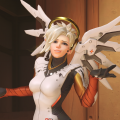With 2009 still fresh in our rearview mirrors, it is time to recap all that went horribly wrong over the course of the year with top 10 lists. At Icrontic Gaming, we’re not satisfied with only 10—no, our list goes to 11. From botched releases to broken systems and awful government decisions, we’ve got it all. Looking back, it is astonishing how bad the low points of 2009 were, but don’t take my word for it…
![]() 11. Modern Warfare 2 server outages on the PS3
11. Modern Warfare 2 server outages on the PS3
A list of the biggest failures of 2009 certainly has to mention one of the biggest releases of the year. Call of Duty: Modern Warfare 2—More Modern Than Last Time was a highly anticipated release which sold a bajillion copies within its first week on store shelves. Modern Warfare 2 was to be the game to finally topple the king of console multiplayer shooters… Modern Warfare 1. Violence-crazed gamers quickly abandoned the first game and took their collective legion to the world of Modern Warfare 2. It immediately became a multiplayer hit, with gamers on the Xbox 360 and PS3 all getting their fill of modern pew-pewing.
Only 24 hours into its release, however, PS3 gamers were seeing red. Widespread server outages killed all multiplayer gaming over PlayStation Network. At its genesis, it seemed that the outage coincided with a patch to fix trophies in the game, but an employee of Infinity Ward eventually stated that the outage was a result of server overload. No matter the cause, PS3 gamers were up a creek while the 360 players continued to run around with n00b tubes and pissed each other off with the Martyrdom perk.
10. Gran Turismo 5 Delayed… Again
Gran Turismo 5 is the holy grail of video games for all gearheads. A series known for its genre-defining graphics and driving physics, Gran Turismo is the reason why many people choose to buy a PlayStation. At the launch of the PS3 in 2006, gamers worldwide knew it was only a matter of time before the venerable racing series saw its glorious HD debut on the console. Those assumptions were correct, as Gran Turismo 5 was announced at E3 2006.
To preempt the release, Gran Turismo 5: Prelude was shown off over the course of nearly two years, facing minor delays and finally released in Spring of 2008. Prelude wasn’t the game racing fans were looking for, as it was only a “prelude” of what to expect from the full product of Gran Turismo 5. So after all of this work, gamers eagerly awaited the release of Gran Turismo 5 in 2009.
The year would come and go without GT5, as the title once more saw a delay. More and more features would be packed in, and the game’s release date was nowhere in sight. In its stead, developer Polyphony Digital released a GT5 Time Trial demo which totally failed to deliver the satisfaction that the full game would provide. Gran Turismo 5 is the kind of exclusive that the PS3 needed early on, and now, in what will be its fourth year, it looks as if the system will finally get GT5 in summer of 2010.
9. Starcraft 2 Delayed
Blizzard created a monster when they released Starcraft in 1998. The game made a huge splash in the Real Time Strategy genre, which played a huge role in the shaping of the genre for future years to come. Starcraft was such a well-balanced, masterful RTS that is it still being supported by patches, has had active efforts to get it working on Windows 7 (3 OS generations after the game’s release), and is still the top RTS game for professional tournaments in South Korea and around the world—eleven years after its initial release.
It goes without question that gamers want a sequel to Starcraft, and in summer of 2007, Blizzard announced that very sequel. With a release date of summer 2009, RTS gamers were polishing their macro skills and conditioning their bodies with energy drinks and potato chips.
In typical Blizzard fashion however, that summer deadline would be missed—in a big way. Starcraft 2 currently does not have an announced release date, but word on the street is suggesting the first half of 2010—another big release pushed back to the disappointment of millions of gamers. Such a thing is hardly a surprise from Blizzard anymore, but we can rest assured that they will not let this game be released with anything short of spectacular quality.
8. Guitar Hero: Van Halen, starring… Who exactly?
Believe it or not, guitar-rhythm games were once a very niche thing. Only the weird kids played them—you know, the ones that are as thin as a rail, play DDR for fun, and wear a fork around their wrist as a bracelet. Such is no longer the case, as the runaway successes of Guitar Hero and Rock Band have ushered in an era of multiple releases per year, and tons of me-too products.
A quick stroll down the gaming aisle will not only reveal games tailored to helping kids think they know how to play guitar in a rock and roll band, but also how to be a DJ, a drummer in a marching band, and a karaoke singer. The influx of music games can almost be considered a fail by itself, but the greatest fail of the music game world in 2009 comes from the team that birthed the very genre.
Activision, of Guitar Hero fame, announced a special Guitar Hero release that focused on the music of Van Halen. Astute gamers may have seen this as a sort of weapon of mass rock n’ roll to counter Harmonix’s Beatles: Rock Band. Unfortunately, GH: Van Halen would completely miss the mark. The duty of deciding the song list was given to Eddie Van Halen’s son, Wolfgang.
While the game does feature some Van Halen hits, it also features a bizarre mix of modern rock tunes (Alter Bridge? Are you serious?), and does very little to chronicle the long career of Van Halen. Worse yet, Van Halen bassist Michael Anthony was removed from the band entirely and replaced by Wolfgang Van Halen. Guitar Hero: Van Halen is a painful indication of the fallout of a genre spilling over its saturation point.
7. Borderlands PC Multiplayer
Borderlands was a game that received a lot of attention early on. Being developed by Gearbox of Half-Life and Brothers In Arms fame, Borderlands had an awesome Mad Max vibe to it, boasted a million guns, and exciting 4 player co-op gameplay. This was the kind of game you would want to play with friends locally, or with others over the internet. Single player was practically out of the question for many gamers. The game was finally released to the televisions and displays of anxious gamers all over, but a major hiccup managed to ruin the experience for most PC gamers.
The first sign of bad news was the fact that Borderlands PC integrated Gamespy for all of its online dealings. The situation only got worse as soon as you tried to connect to a game. Connection timeout errors occurred on almost every single connection attempt. It didn’t matter if you were trying to play with friends or on public servers, and firewalls weren’t causing the issue. No matter what you tried, the meat and potatoes of Borderlands were inaccessible. Forum posts all over the internet had desperate gamers forwarding multiple ports just to get infrequent successful connections. Some gamers even used Hamachi to connect with friends on a private network, and even that method wasn’t 100% foolproof.
To make matters worse, instead of rapid response to address the issue, Gearbox dragged their feet. Rather than fixing the broken multiplayer, they released a DLC pack, and a patch that made a few random tweaks to the game. A full month after release and PC gamers were still dealing with the initial problem.
 6. Modern Warfare 2 (the PC version)
6. Modern Warfare 2 (the PC version)
Modern Warfare 2 is back again for more 2009 suck. Call of Duty has always been a multi-platform franchise. It originated on the PC, and has since seen side by side releases on the PC and consoles alike. Modern Warfare 2 was no exception to this trend. Though the PC platform didn’t share the multiplayer dominance that the consoles had with Modern Warfare, PC gamers were still ready to unleash a tactical nuke or two upon unsuspecting foes.
Weeks before the game’s release, information about the PC version began to trickle out that left gamers in a blind rage. Infinity Ward had chosen to launch the game with zero support for dedicated servers. This meant that PC tech heads with extra hardware couldn’t host their own server to be dedicated to clan use, or to run special game mods. This was essentially stripping the PC gamers of one of the greatest benefits to gaming on their platform. Many gamers worried that lack of dedicated servers would yield higher pings for every player (a worry that was indeed true at launch).
The hits kept coming: Soon after the announcement of no dedicated servers, it was revealed that Modern Warfare 2 on the PC would, like its console counterparts, only support 18 players per game. 9 versus 9. Players were enraged that their port was being hindered by console limitations, and many began writing it off as lazy programming and a profit-centric focus. To cap it all off, the PC version of Modern Warfare hit store shelves at the low, low price of $59.99. This price is typical for new console video games, but on the PC platform it was $10 to $20 more than the price of new releases. Perhaps the biggest fail of all comes from the fact that despite all of these setbacks and complaining gamers, Modern Warfare 2 still broke sales records at its launch.
 5. The PSP Go
5. The PSP Go
The PlayStation Portable launched in 2005 as Sony’s response to the Nintendo DS. The system used a disk-based media dubbed UMD. It had higher processing power than the DS, a larger, more vibrant screen, a built in analog nub, and the support of Sony’s first party developers. One of the defining features of the handheld was support for feature length movies. Unfortunately, owners had to buy movies specifically released on the awkward UMD format, but gamers were able to amass a nice, portable library of films to watch on their PSPs.
At E3 2009, Sony revealed a smaller, more streamlined version of the PSP cleverly titled the PSP Go. This new version should have been an attractive offering for gamers looking for a new mobile solution. Gone was the UMD drive—the system relied entirely on digital distribution. The controls were hidden, revealed only by the sliding up motion of the screen, producing a smaller footprint. It even featured Bluetooth. How could they possibly go wrong with this relaunch? If there’s one company that can find an answer to that question, it’s Sony.
The PSP Go was a misfire in many different directions. The handheld’s biggest feature—wireless digital distribution—wound up being its weakest link. The device’s wireless hardware was only capable of the aging 802.11b standard (and wireless standards do not age like a fine wine). Gamers upgrading from the original PSP to the Go not only found inconvenience in the fact that their entire library of films and games were no longer compatible thanks to the removal of UMD, but the new platform lacked any kind of UMD conversion option.
Existing customers would quite literally have to re-buy their entire library if they wanted to play on their PSP Go. Even when you got to the built in games store, the interface was unintuitive and frustrating. On top of all of these issues, the PSP Go introduced a new, higher price tag of $250. The PSP Go was a perfect example of how not to relaunch a platform, and is yet another contributing reason as to why the Nintendo DS has been beating the snot out of the PSP for years.
 4. Stardock’s launch of Demigod
4. Stardock’s launch of Demigod
Stardock is a company that has created many solid strategy titles on the PC platform. Perhaps one of their most well-known positions as a company is their anti-DRM stance. Game developers that make great games and don’t infuse them with intrusive DRM are few and far between today, and gamers typically welcome those that do with open arms. After moderate success with Galactic Civilizations I and II and Sins of a Solar Empire, gamers waited anxiously for Stardock’s latest foray into the RPG Strategy genre. Demigod was a game that built itself around the wildly successful formula of the Warcraft III mod Defense of the Ancients. It would be a multiplayer-centric game that featured a nice graphics engine, expansive skill trees, and beautifully deadly monstrosities know as Demigods. Everything about the game seemed to be shaping up nicely during development, but it wasn’t until launch that everything crumbled apart.
Trouble began once Gamestop stores put Demigod on shelves for sale too early. This was according to a miscommunication between Gamestop corporate and their retail stores. This seems to happen all too frequently with Gamestop, but this was particularly painful for Stardock as the multiplayer servers had not yet been turned on, and the sale happened over Easter weekend. During the course of the weekend, a pirated copy spread like wildfire on the internet, assisted by the lack of any major DRM system on the game.
Come the start of the new week, Stardock was quick to address the issue once the game was officially launched and migrated players to the official servers. Unfortunately, due to a massive influx of players and pirates, and issues with Demigod’s multiplayer connections being peer to peer rather than client/server, online play was terribly buggy and nearly unplayable. Connection problems were very prevalent, and players became very frustrated. Without a strong single player offering, Demigod was relying on its competitive multiplayer focus at launch and took a lot of heat for failing to deliver. It would be two months before the extent of the connectivity problems were addressed in a patch.
3. The Saboteur Launch on PC/ATI
The Saboteur was a high profile launch from Pandemic studios that had many people excited. It featured a very stylish WWII-era France, open-ended gameplay, great driving mechanics, and hybrid gameplay that blended action, stealth, and acrobatics. It was Pandemic’s final game as a studio before being shut down at the end of the year. The Saboteur was to be a mutli-platform release, letting players on PS3, Xbox 360, and PC alike blast their way across Nazi-occupied France as Sean Devlin. The game had a decent buzz about it with its unique brothel-themed showing at E3, and its lavish launch in Paris. The game’s release in early December would finally appease the waiting fans—unless you were playing on PC with ATI graphics hardware.
The issue was big. If you were playing The Saboteur in Windows Vista or Windows 7 with almost any ATI GPU, the game wouldn’t run. NVIDIA owners experienced no such issue. The bug seemed most prevalent with ATI 3XXX, 4XXX, and 5XXX series GPUs, which pretty much rounded up all of the current hardware that was capable of playing the game. The closure of Pandemic Studios also seemed to worsen the issue as the game wasn’t patched to work on ATI hardware until EA did so two weeks after its release. There was no official response as to why the compatibility was overlooked in pre-release testing—one can only assume it has to do with the debacle of closing a studio during the same week they were releasing their game. It is certainly a sloppy mistake for such a large release, and a good example of why extensive hardware testing is a necessity on the PC gaming platform.
2. Duke Nukem Forever
Little can be said that hasn’t been already of the legacy of Duke Nukem Forever. Intended to be a sequel for 1996’s Duke Nukem 3D, the game had been in development since 1997. To put it into perspective, when Duke Nukem Forever was announced, Half-Life hadn’t been released yet, Titanic was in theaters, and United States President Bill Clinton had not yet explained his lack of inappropriate interactions with a woman outside of wedlock. The enormous amount of development time for DNF (which, ironically, is an acronym for Did Not Finish) made it the butt of jokes year after year as the once wildly anticipated game failed to kick ass and chew bubblegum. After many false promises and restarts, a trailer was released in December of 2007, and the game finally looked to be on the track to release after over a decade in development. Duke fans knew better than to get their hopes up, and for one more final time, they were right.
Duke Nukem Forever was officially canned in May of 2009 and developer 3DRealms was shut down. It really was the end of an era, and despite the fact that almost everyone expected this to happen, it still came as a bit of a shock. Countless man hours, millions of dollars, and 12 years, all thrown away. George Broussard, co-creator of Duke Nukem and co-director for DNF, was never satisfied with the game. He was constantly adding more features and making the game bigger (it saw development on four different graphics engines), and this would ultimately become DNF’s undoing.
It was a big project led by a man who thought he had an endless wallet and was obsessed with perfection. His relentless pursuit of technological supremacy would serve as the greatest catalyst to preventing the game from fully materializing. Duke Nukem Forever is one of the greatest tragedies of Video Game history. It was a runaway train that we all knew was destined to ride off a cliff to an unspeakable doom, and all we could do was sit and watch the whole thing happen.
1. Left 4 Dead 2 Refused Classification in Australia
Left 4 Dead 2 is the wonderfully gory zombie-survival shooter from Valve that hit shelves near the end of 2009. It saw its own bit of controversy and fail as it was released less than a year after its predecessor, Left 4 Dead. Many gamers felt that they were being cheated out of content in the original game, and that Valve was just looking to make a quick buck. That isn’t why L4D2 takes the cake for worst gaming failure of 2009 however. What really made it stand alone upon the golden throne of failure actually had nothing to do with the product itself. See, L4D2 introduced many new play mechanics and features, and one such addition was a wonderfully gratuitous new gore engine. Zombies can be completely dismembered, bullet impacts would reveal inner organs—shiny with the glint of fresh blood, heads can be blown in half, entrails even had rigid body physics applied to them as they unraveled and dumped out of the zombies’ blown-apart bodies. It seemed everyone was eager to get their hands on this bloody good use of new technology. Everyone, that is, except for the country of Australia.
Media released in Australia must first pass through the Office of Film and Literature Classification, or OFLC for short. This is a fancy way of describing a monolithic organization that decides for the people what they can and cannot see, and censors the work accordingly. In order to make it to store shelves, media must first pass classification by the OFLC. L4D2 was quickly given the classification of RC, meaning Refused Classification. As a result of this “rating”, the game would be banned from all sales in Australia in both retail and digital methods of distribution. Australia was the only country in the world to ban the game.
The OFLC cited many asinine reasons for banning the game, such as “piles of bodies laying about the environment”, and “copious blood spray and splatter”. They detailed the infected zombies of the game as “living humans infected with a rabies-like virus”. The entire debacle boiled down to a few disgruntled old men on the OFLC board that felt no one in the entire country of Australia were mature enough to play Left 4 Dead 2.
Valve would eventually re-submit Left 4 Dead 2 for classification after heavily modifying the game. They reduced gore to an almost nonexistent level, dead bodies disappeared the moment they hit the ground, and decapitations and dismemberment were completely removed from the game. Valve probably felt the need to replace the weapons with teddy bears and gum drops, but fortunately for Australian gamers, they stuck to guns. This now kiddie-friendly version of Left 4 Dead 2 was finally given a rating of MA 15, meaning it would see store shelves, and no adult gamer would want to play it. Sure, it was released and gamers allowed to purchase it, but in a situation such as this, nobody wins.
Final thoughts
Ought nine certainly had some ugly moments for the gaming world. Some truly awful decisions were made all across the board, from small studios to entire governments. At the end of the year, no one is safe from epic fail. Hopefully this trip down fail lane will help those in the industry to avoid making this list next year, and those that play the games and experience the hardships smile in the face of misfortune. After all, how can you not laugh at the bumbling manner in which a country rates a violent video game? Oh right, unless you’re an Australian gamer… Better luck in 2010!

























 Articles RSS
Articles RSS